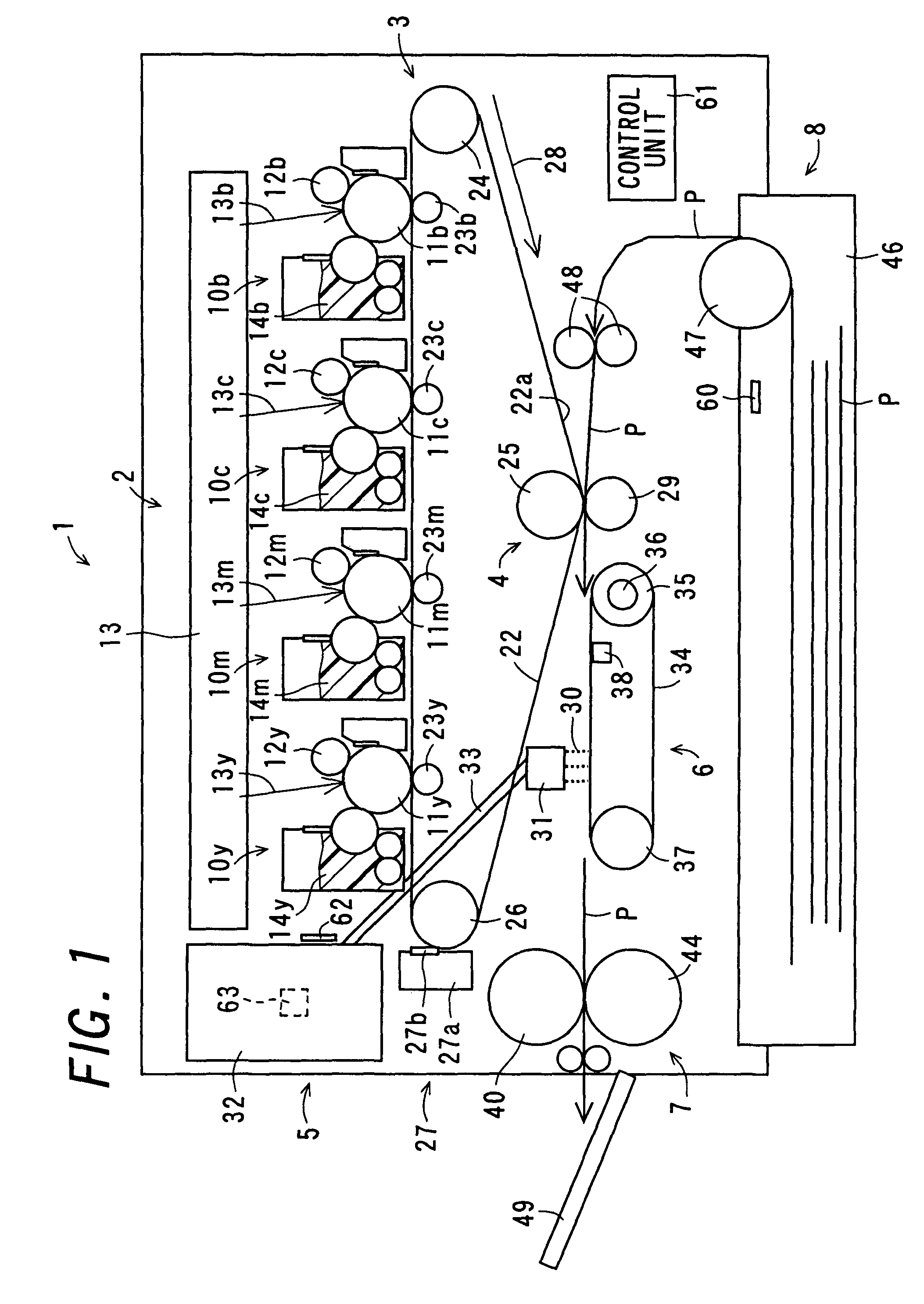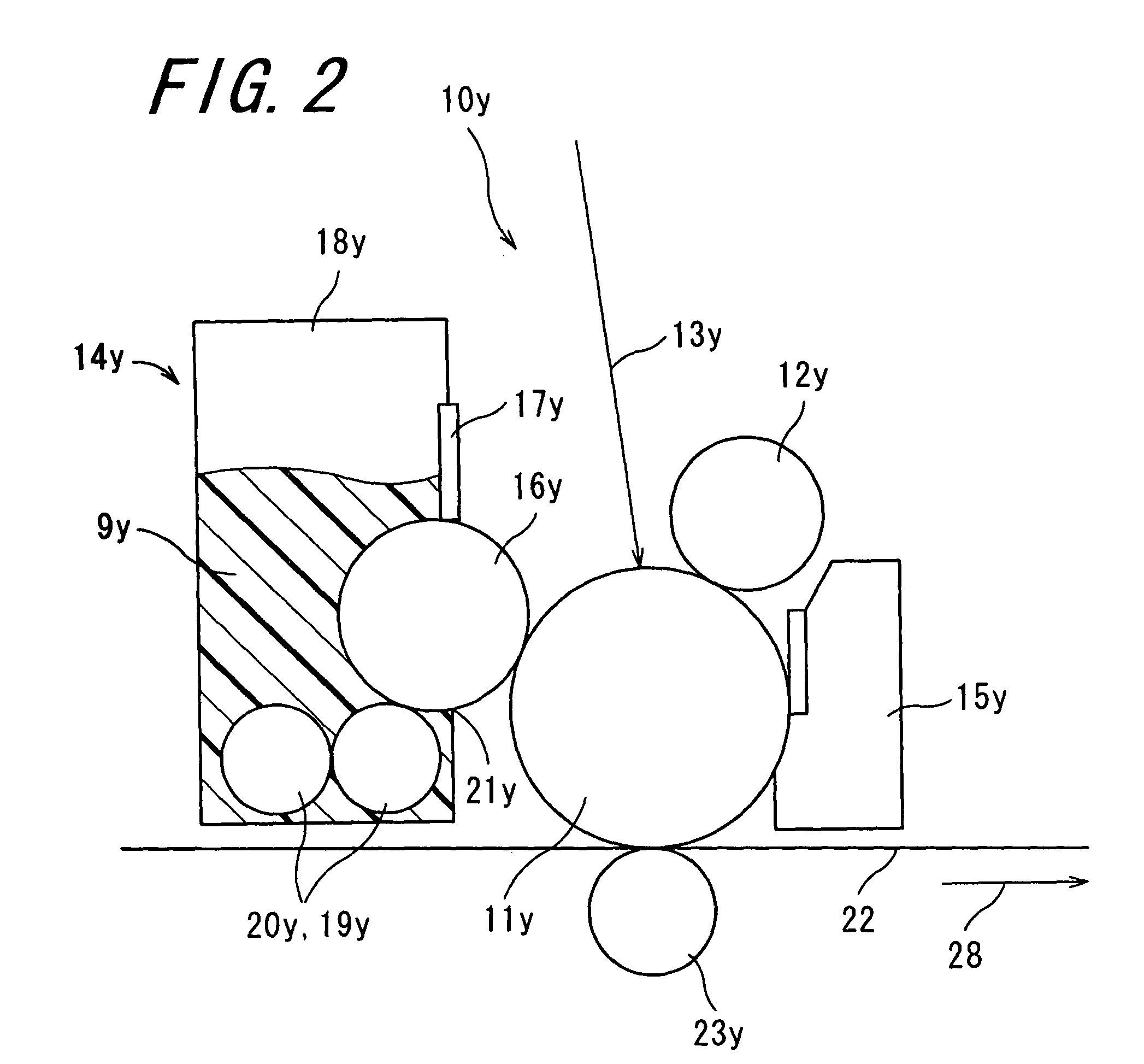Image forming apparatus controlling a droplet size of a fixing solution
a technology of droplet size and fixing solution, which is applied in the direction of electrographic process apparatus, instruments, optics, etc., can solve the problems of image deterioration, inability to fix the toner image, and reduced temperature of the toner image, so as to reduce the amount of heat energy and avoid curling or wrinkles
- Summary
- Abstract
- Description
- Claims
- Application Information
AI Technical Summary
Benefits of technology
Problems solved by technology
Method used
Image
Examples
first embodiment
[0049]FIG. 1 is a cross-sectional view schematically showing the configuration of an image forming apparatus 1 according to the invention. FIG. 2 is a cross-sectional view showing an enlarged configuration of the main portion (a toner image forming section 2, which will be described later) of the image forming apparatus 1 shown in FIG. 1. FIG. 3 is a cross-sectional view showing an enlarged configuration of the main portions (a transferring section 4, a part of fixing solution applying section 5, a transporting section 6, and a fixing section 7, which will be described later) of the image forming apparatus 1 shown in FIG. 1. FIG. 4 is a cross-sectional view schematically showing the configuration of a fixing roller 40, which will be described later. The image forming apparatus 1 is an electrophotographic image forming apparatus with a tandem structure in which toner images in four colors, yellow, magenta, cyan, and black are sequentially transferred while being superimposed one on a...
second embodiment
[0095]FIG. 5 is a cross-sectional view schematically showing the configuration of the main portions of an image forming apparatus 50 according to the invention. The image forming apparatus 50 is similar to the image forming apparatus 1. The components corresponding between these image forming apparatuses are given the same reference numbers or not shown in the drawing, and a description thereof is not repeated. The image forming apparatus 50 is characterized by a comprising transporting section 51 and a fixing section 52, instead of the transporting section 6 and the fixing section 7 in the image forming apparatus 1. Also, the image forming apparatus 50 is characterized by further comprising a fixing solution warming section 62a inside the fixing solution storage tank 32 of the fixing solution applying section 5.
[0096]The fixing solution warming section 62a and the temperature sensor 63 are provided inside the fixing solution storage tank 32 in the fixing solution applying section 5...
PUM
 Login to View More
Login to View More Abstract
Description
Claims
Application Information
 Login to View More
Login to View More - R&D
- Intellectual Property
- Life Sciences
- Materials
- Tech Scout
- Unparalleled Data Quality
- Higher Quality Content
- 60% Fewer Hallucinations
Browse by: Latest US Patents, China's latest patents, Technical Efficacy Thesaurus, Application Domain, Technology Topic, Popular Technical Reports.
© 2025 PatSnap. All rights reserved.Legal|Privacy policy|Modern Slavery Act Transparency Statement|Sitemap|About US| Contact US: help@patsnap.com



